Improved Pasture Management Systems
| Project start date: | 01 January 2022 |
| Project end date: | 15 March 2025 |
| Project status: | In progress |
| Livestock species: | Grass-fed Cattle, Sheep, Lamb |
| Relevant regions: | South Australia, Mediterranean |
| Site location: | Upper North Region, SA: Caltowie North, Pekina & Melrose |
Summary
The producer demonstration site project aims to improve the pasture management systems implemented in the Upper North of South Australia through demonstrating:
-
Better pasture options that improve the mixed farming enterprise, and
-
That a better understanding of Food On Offer, including feed budgeting and the use of remote sensing pasture assessment tools will improve overall livestock productivity, enterprise profitability and farm sustainability.
Objectives
By January 2025, in the Upper North region of South Australia:
-
Demonstrate three options for a mix of pasture/fodder species that can provide superior FOO measured by:
-
Improved liveweight growth of lambs
-
Improved CS of ewes
-
Improved biomass production
-
Improved ground cover
-
-
Conduct an analysis of the cost:benefit of the trialed pasture mixes
-
Adoption:
-
60% of core/engaged producers will have adopted improved pasture mixes that have resulted in either an improved biomass production by 10% or groundcover over summer by 5% depending on the pasture mix and site objectives.
-
10% of observers (measured from workshop and field day participants) will have adopted improved pasture mixes that have resulted in either an improved biomass production by 10% or groundcover over summer by 5% depending on the pasture mix and site objectives.
-
-
Awareness, Knowledge and Skills:
-
100% of core/engaged producers will have an improved understanding of pasture mixes, the role they play in improved biomass production and maintaining groundcover over summer and how to measure and manage them to improve livestock production outcomes.
-
50% of observers (measured from workshop and field day participants) will have improved understanding of pasture mixes, the role they play in improved biomass production and maintaining groundcover over summer and how to measure and manage them to improve livestock production outcomes.
-
-
Conduct ground truthing for Cibo Labs at 3 sites across the region on at least 6 different pasture types (3 sown mixed pastures (demonstrations), 3 single species or self-regenerating pastures (controls))
-
Demonstrate the use of satellite pasture monitoring technology for feed budgeting and encourage adoption of the new technology by 6 producers
-
Implement a series of training activities to increase producer understanding of assessing FOO and feed budgeting and encourage adoption of these practices by 25 producers
Progress
Upper North Farming Systems is hosting a Producer Demonstration Site aiming to improve pasture management systems through demonstrating: 1. Better pasture options that improve the mixed farming enterprise, and 2. A better understanding of Food On Offer, including feed budgeting and the use of remote sensing pasture assessment tools to improve overall livestock productivity, enterprise profitability and farm sustainability.
The demonstration site near Caltowie North has compared single species with mixed species pastures and highlighted the importance of not only pasture biomass, but also pasture quality when identifying stocking rate and duration. This demonstration has shown a strong correlation between satellite imagery and biomass measurements. So far, results are providing optimism that with a combination of tools and information, it is reasonable to have confidence to make decisions around grazing timing, stocking rate and grazing length using satellite imagery in this scenario. A workshop is planned for Spring 2024.


